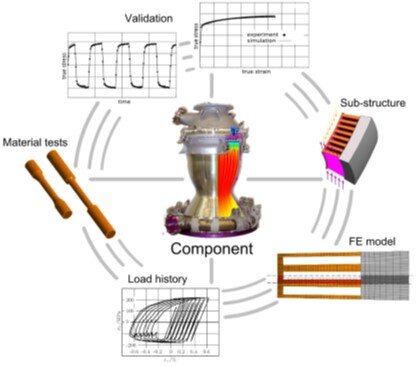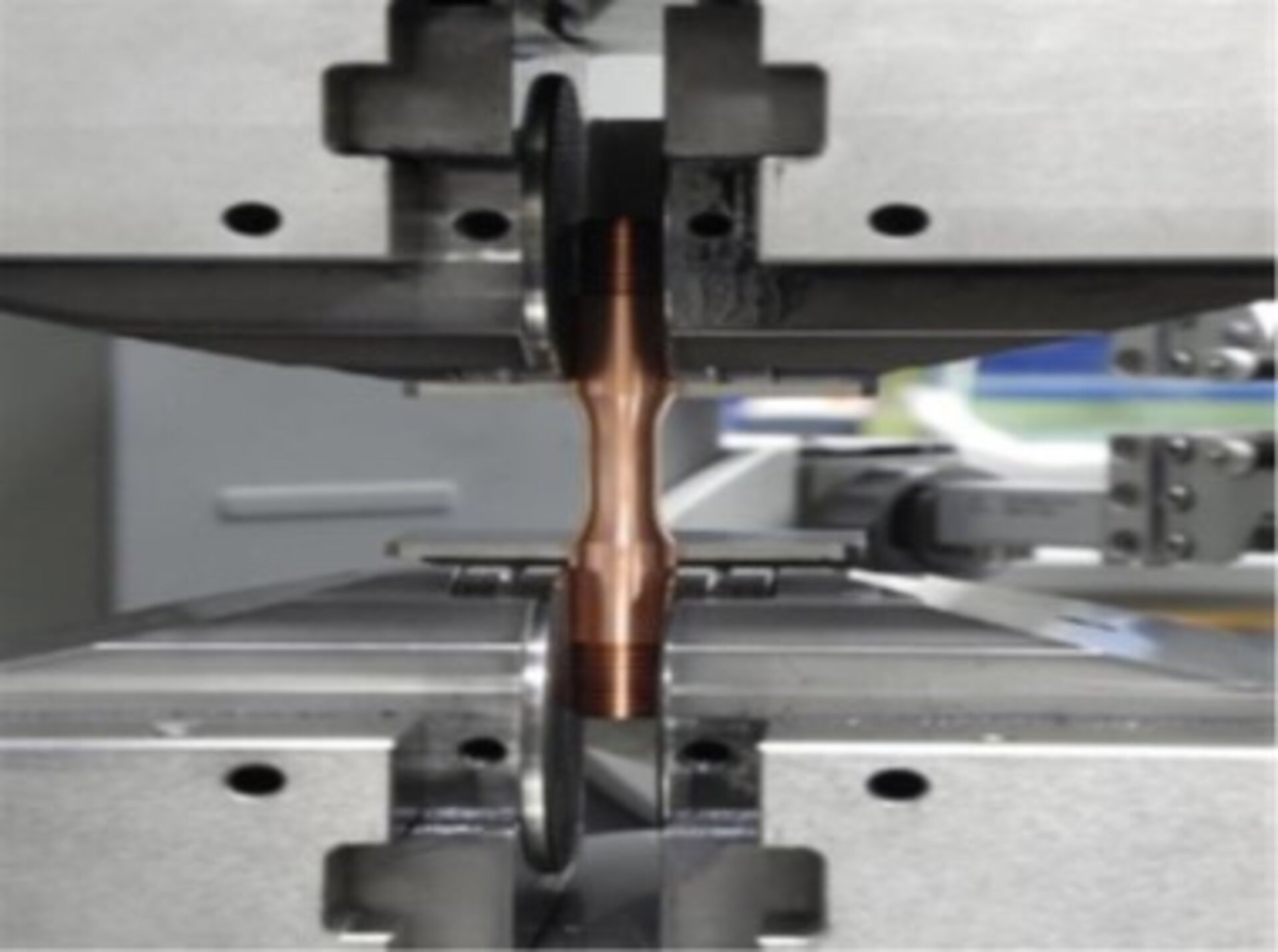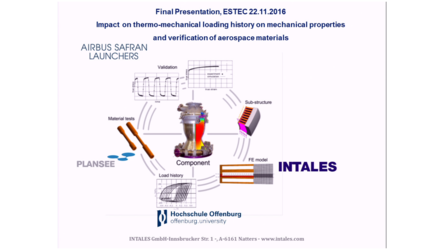Impact of thermo-mechanical loading history on mechanical properties and verification of aerospace materials
| Programme: | TRP Workplan | Achieved TRL: | 3 |
| Reference: | T420-304MS | Closure: | 2016 |
| Contractor(s): | INTALES (AT), Airbus (DE), Un. Offenburg (DE) | ||
In the development process of combustion chambers the assessment of thermal and mechanical highly loaded components is key for the hardware justification. Current justification approaches lack of the ability to correctly represent the ratcheting effect as it occurs under the thermo-mechanical loading regime of a regeneratively cooled combustion chamber.
Objectives
To determine the impact of the thermo-mechanical loading history on the mechanical characteristics of aerospace materials. This includes the effects of ratcheting and complex non-isothermal thermo-mechanical loading history.

Achievements and status
An enhanced visco-plastic material model with ratcheting terms was established. This model allows the simulative reproduction of plastic shakedown behavior in thermo-mechanical loading regimes as could be verified in strain controlled uniaxial experiments. The application to a stress controlled loading regime showed a less precise predictability of the material behavior. An approach to overcome this issue is discussed under the suggestion of performing the parameter identification process from thermo-mechanical test regimes. This approach, however, requires the definition of a temperature dependency based on physical principles for all parameters.
Benefits
It is now possible to predict plastic shakedown for ratcheting behavior that is usually taken too conservative in actual justification approaches.
Next Steps
The main step that should follow next is the investigation of the ratcheting based damage mechanism and the introduction of a damage model that addresses this mechanism.















 Germany
Germany
 Austria
Austria
 Belgium
Belgium
 Denmark
Denmark
 Spain
Spain
 Estonia
Estonia
 Finland
Finland
 France
France
 Greece
Greece
 Hungary
Hungary
 Ireland
Ireland
 Italy
Italy
 Luxembourg
Luxembourg
 Norway
Norway
 The Netherlands
The Netherlands
 Poland
Poland
 Portugal
Portugal
 Czechia
Czechia
 Romania
Romania
 United Kingdom
United Kingdom
 Slovenia
Slovenia
 Sweden
Sweden
 Switzerland
Switzerland




























